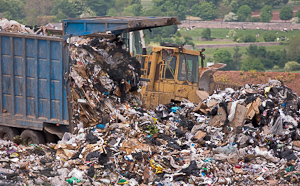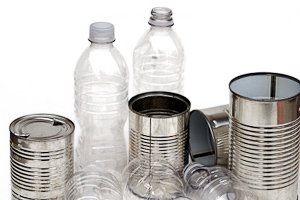The Problem with Biodegradability
 Confusion about which products are legitimately biodegradable
Confusion about which products are legitimately biodegradable
By definition, most chemicals are biodegradable because they’re capable of being broken down by the action of living things, such as microorganisms.
However, there’s no universal definition or certification for the marketing claim “biodegradable”. The Federal Trade Commission (FTC) has issued general guidelines on what types of products qualify as legitimately biodegradable, and has even sued companies for unsubstantiated, misleading and/or deceptive use of the term on product labels.
Current FTC guidelines state that for marketers to make such a claim, an entire product or package should completely break down and return to nature within a “reasonably short period of time” after customary disposal. A new proposal to tighten these guidelines further defines a “reasonably short period of time” to be no more than one year after customary disposal. The FTC also states that marketers should not make unqualified claims of biodegradability for items destined for landfills, incinerators, or recycling facilities, because decomposition will not occur within one year.
BioMass Packaging continues to conform to FTC guidelines for all products we sell and represent.
There’s a vast difference in how long it takes for different materials to break down
How quickly an item decomposes into the earth depends on its basic components, the percentage of its biodegrading materials, and where it is left to decompose.
In a perfect world:
- A plastic toy would break down as quickly as a piece of birthday cake
- Substances would degrade into carbon dioxide and water
- Certain chemicals would not degrade into more dangerous substances, like the banned, toxic pesticide DDT, which breaks down into DDE and DDD — more harmful than the original substance

- Apple core: 1 to 2 months or longer, due to lack of microbes
- Paper Bag: 1 month
- Tin Can: 50 years
- Aluminum Can: 80-200 years (if recycled, it can be reused within 6 weeks)
- Disposable Diapers: 550 years
- Plastic Bags: up to hundreds of years
- Plastic drinking bottles: hundreds of years (they consist of polyethylene terephthalate (PET))
- Plastic milk jug: 500 years
- Glass: 1-2 million years (but if recycled, it can be reused within 6 weeks)
- Styrofoam: never (no sign of ever breaking down)
The Solution
For consumers to judge the viability of a biodegradable product claim, they can:
- Start by reading the product label
- Look for manufacturers who clearly list all product ingredients
- Try to select products that are made of ingredients you recognize as natural
- Choose products packaged in bioplastic over those in petroleum-based plastic
Do research online to further determine the biodegradability and compostability of certain products, and how long each product may take to break down completely. These would include food items, plastic resins, packaging materials, bags, and consumer products.
Also, a few third-party organizations that offer voluntary standards and labels to companies have created scientifically based, standards and certifications for compostability of certain materials.
Rely on third party certifications for accurate information
 Companies voluntarily participate in third party certification programs to assure their customers that their products behave as advertised. There are several independent organizations that offer certifications, such as:
Companies voluntarily participate in third party certification programs to assure their customers that their products behave as advertised. There are several independent organizations that offer certifications, such as:
-
- The Biodegradable Products Institute (BPI) is a non-profit organization that educates manufacturers and the public about biodegradability as it relates to composting bio-plastics materials and other coatings and packaging that may go into commercial compost facilities. ASTM standards 6400 and 6868 and its Compostable label may be found on products such as garbage bags, service ware, and packaging.
Recycle everything possible
About 70% of materials that are routinely disposed of in landfills could be recycled instead. More than 30% of bulk municipal garbage collections consist of paper that could be remade into other paper products. Other materials like plastic, metal and glass can also be repurposed.
Recycling these materials can not only greatly reduce the amount of waste disposed in landfills, but preserve our limited sources of nonrenewable raw materials.
The Benefits
- Take less time to break down than other solid materials
- Are made from biomass — organic compounds are completely renewable
- Are better for the environment, dispersing very few greenhouse gases
- Often require less than half as much energy to manufacture
- Are non-toxic
- Reduce our dependence on foreign countries’ fossil fuels<
- Reduce the costs of solid waste disposal
- Divert waste from already overcrowded landfills, thereby reducing groundwater and air pollution via methane
- Support local, sustainable businesses such as composters
For more information about biodegradability, you can visit these websites:
American Chemistry Council
Biodegradable Products Institute
Federal Trade Commission(FTC Guides for the Use of Environmental Marketing Claims)
Science.jrank.org
Scientific Certifications Systems
